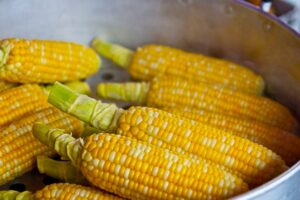Introduction
Polymers of carbohydrates are commonly known as polysaccharides. These complex molecules are composed of repeating units of monosaccharides, which are simple sugars. Polysaccharides play crucial roles in various biological processes and are found in a wide range of natural sources, including plants, animals, and microorganisms. Understanding the different types of polysaccharides and their functions is essential for comprehending the complexity and diversity of carbohydrates in living organisms.
Types of Polysaccharides
Starch: Starch is one of the most well-known polysaccharides, serving as a major energy storage molecule in plants. It is composed of two types of glucose polymers: amylose and amylopectin. Amylose is a linear chain of glucose molecules, while amylopectin is a branched structure. Starch is commonly found in staple foods such as potatoes, rice, and wheat.
Glycogen: Glycogen is the animal equivalent of starch and serves as a primary energy storage molecule in humans and animals. It is highly branched and mainly stored in the liver and muscles. Glycogen can be rapidly broken down into glucose when the body requires energy.
Cellulose: Cellulose is a structural polysaccharide that forms the primary component of plant cell walls. It consists of long chains of glucose molecules linked together by β-1,4-glycosidic bonds. Unlike starch and glycogen, cellulose cannot be digested by most animals due to the lack of specific enzymes. However, certain microorganisms, such as bacteria and fungi, can break down cellulose.
Chitin: Chitin is another structural polysaccharide found in the exoskeletons of arthropods, including insects, crustaceans, and the cell walls of fungi. It is composed of N-acetylglucosamine units linked by β-1,4-glycosidic bonds. Chitin provides strength and rigidity to the structures it forms, such as the hard shells of insects and the cell walls of fungi.
Hyaluronic Acid: Hyaluronic acid is a polysaccharide that plays a vital role in maintaining the structure and lubrication of connective tissues, such as skin and joints. It is composed of repeating units of glucuronic acid and N-acetylglucosamine. Hyaluronic acid is known for its ability to retain water, contributing to the hydration and elasticity of tissues.
Functions of Polysaccharides
Polysaccharides serve various functions in living organisms:
Energy Storage: Starch and glycogen act as energy storage molecules, providing a readily available source of glucose when needed. Plants store starch in their roots, stems, and seeds, while animals store glycogen primarily in the liver and muscles.
Structural Support: Cellulose and chitin provide structural support to plants, fungi, and arthropods, respectively. They contribute to the rigidity and strength of cell walls and exoskeletons, enabling these organisms to maintain their shape and protect their cells.
Cellular Communication: Polysaccharides such as hyaluronic acid play a role in cell signaling and communication. They can act as receptors or ligands, facilitating interactions between cells and regulating various cellular processes.
Immune Response: Certain polysaccharides, known as glycoconjugates, are involved in immune responses. They can act as antigens, triggering the production of antibodies and immune responses against pathogens.
Conclusion
Polymers of carbohydrates, or polysaccharides, encompass a diverse range of molecules with various functions in living organisms. Starch and glycogen serve as energy storage molecules, while cellulose and chitin provide structural support. Polysaccharides like hyaluronic acid play roles in cellular communication and immune responses. Understanding the different types and functions of polysaccharides is essential for comprehending the complexity and importance of carbohydrates in biological systems.
References
1. Nelson, D. L., Cox, M. M. (2008). Lehninger Principles of Biochemistry. W.H. Freeman and Company.
2. Berg, J. M., Tymoczko, J. L., Gatto, G. J. (2015). Stryer’s Biochemistry. W.H. Freeman and Company.
3. Alberts, B., Johnson, A., Lewis, J., Raff, M., Roberts, K., Walter, P. (2002). Molecular Biology of the Cell. Garland Science.












